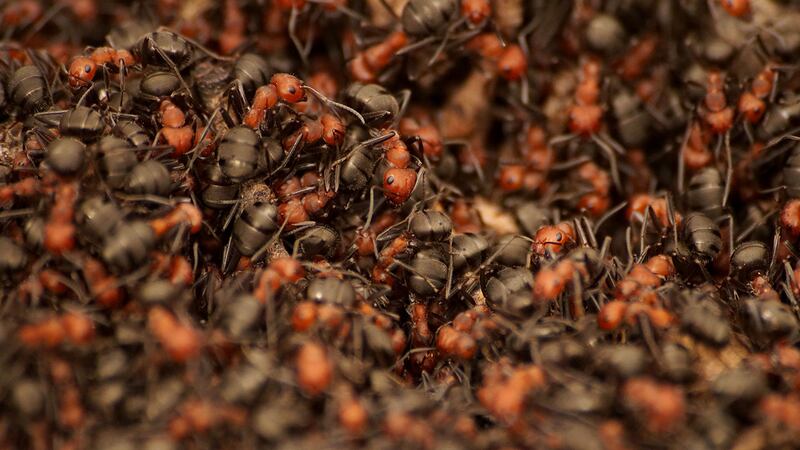Add one more thing to dangers lurking in Texas floodwaters: fire ants.
Several social media users have tweeted pictures of floating rafts of fire ants they spotted in Harvey floodwaters. While the formations may shock some (and terrify most) the living structures are nothing new.
Fire ants are "one of few insects capable of building big structures with their bodies by linking them together, according to Vox.
The rafts are formed by a lot of ants “basically holding hands” in order to stay near the queen, and in order to “generate a waterproof weave,” the news site reports.
Pro tip: Don't touch the floating fire ant colonies. They will ruin your day. #Harvey pic.twitter.com/uwJd0rA7qB
— Mike Hixenbaugh (@Mike_Hixenbaugh) August 27, 2017
That's a floating mass of fire ants and it made my hair stand on end. #houston #harvey https://t.co/75inwXo7Nu pic.twitter.com/O3RUVbox0J
— Peter Bonilla (@pebonilla) August 28, 2017
According to an American-Statesman story in 2015 about flooding in South Carolina:
“In an effort to survive fire ants can link together to form these masses in under two minutes. They will then tip their 'raft' into the water before they are completely submerged, and can survive this way for up to 12 days. Once the living raft hits land the ants will separate and leave the water. The queen is kept safe in the middle of the raft, while fire ant workers protect larvae and eggs by keeping them in their mouths. Entomologist Tim Davis warned residents to avoid the ants at all costs. 'If one of those rafts comes in contact with you, or you try to break it apart, it will likely disperse and crawl up you,' he said.”
Ants, however, may be the least of storm-weary Texans' worries. Warnings about alligators and fears over snake infestations seem to rank higher in the scheme of things.
This is why you don’t dork around in flood waters. Floating pile of fire ants from a local retention pond #Harvey pic.twitter.com/MwFQmfrP38
— Jon Ruder (@JRuder1) August 27, 2017
Cox Media Group








